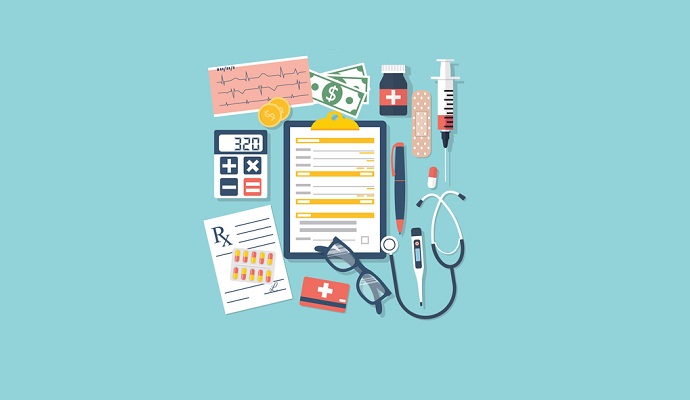Healthcare Spending Growth Hits 5.8% Yearly from 2015-2025
By 2025, healthcare spending is expected to make up one-fifth of the total US economy.

- Healthcare spending may not be rising as quickly as in previous years, but it is still moving upwards. The Centers for Medicare & Medicaid Services’ (CMS) Office of the Actuary (OACT) released a report last week that states the growth rate of healthcare spending is predicted to be 5.8 percent annually between 2015 to 2025.

This is still lower than the rise in healthcare spending found nearly a decade ago, when it was near 8 percent. Nonetheless, this is 1.3 percent higher than the growth rate of gross domestic product, according to Health Affairs, which published the findings.
By 2025, healthcare spending is expected to make up one-fifth of the total US economy. Some of the key drivers that are still causing healthcare costs to rise include the aging population, coverage trends, and ongoing increases in the price of medical care. Additionally, economic prosperity may also affect the upward mobility of healthcare spending growth.
The Affordable Care Act and its expansion of Medicaid along with the opportunity purchase health plans through the health insurance marketplace has also stimulated the growth in healthcare spending and will likely continue through 2017, according to the report.
Nonetheless, while the ACA may not have as much effect on driving spending upwards in later years, the aggressive growth in medical prices will lead overall healthcare spending to accelerate between 2017 to 2019. The baby boomer generation is also expected to hit the typical ages of eligibility for the Medicare program, which will bring many more people into this type of subsidized medical coverage.
“In the period 2017–19, rates of spending growth are expected to rise across most sectors and payers. As a result, national health spending growth is projected to average 5.7 percent over this period, compared to 4.8 percent in 2016. This faster trend is primarily the result of a projected gradual acceleration in medical price growth and the impact of increased demand for care in response, on a lagged basis, to accelerating growth in disposable personal income,” the report stated.
The Medicare program may have financial troubles in the coming years due to the aging baby boomer population along with the potential depletion of the Hospital Insurance Trust Fund, as reported by a recent Medicare Trustees report. As Medicare enrollment increases over the coming years, it is predicted that the Medicare program will be spending about $18,000 per enrollee in 2025.
“The Medicare HI Trust Fund, which pays for inpatient hospital services, is now projected to be depleted by 2028. At that time, payroll tax revenues are projected to cover only 87 percent of program costs,” Michael Thompson, Chairperson of the American Academy of Actuaries Medicare Subcommittee, told HealthPayerIntelligence.com. “Eliminating the deficit would require an immediate 25 percent increase in standard payroll taxes or an immediate 16 percent reduction in expenditures, or some combination of the two. Delaying action would require more severe changes in the future.”
Medicaid spending growth is also expected to average 5.6 percent through 2019 due to the fact that disabled and elderly patients often require more expensive healthcare services. Among private health payers, the report notes that health insurance spending growth will also hit 5.6 percent from 2015 to 2025. A large part driving the rise in health insurance spending is due to more expensive pharmaceutical drugs.
“Growth in private health insurance spending is projected to remain at or above 5 percent, on average, throughout the latter half of the projection period but to generally slow in the final few years of the period in lagged response to slower growth in income. Notably, growth in private health insurance spending is expected to be outpaced by faster overall Medicare spending growth during this time, in part because of the continued shift of baby boomers out of private health insurance and into Medicare,” according to the report.
Despite this report’s focus on a continual rise in healthcare spending, many of its predictions are truly dependent economic conditions, which may change depending on a number of factors. Additionally, there are variables within the Affordable Care Act which may have long-term effects on healthcare spending that haven’t been determined in this report. For instance, consumers, providers, and employers may have different responses and behaviors stimulated by the ACA that could impact healthcare costs.
In addition, it is important to note that, while the healthcare spending growth rate hit 5.5 percent in 2015, it is expected to slow down to 4.8 percent for 2016. Rising income growth and disposable spending may also have a role in increasing healthcare prices. Some benefits cited in the report are that medical price inflation slowed down in 2015 to only 0.8 percent and hospital price growth also declined to 0.9 percent growth last year.
Currently, it seems that the Affordable Care Act and other cost-cutting measures have made an impact on slowing down the growth rate of healthcare spending across the country. However, more steps may need to be taken to keep healthcare costs rising at the same rate as gross domestic product.
Dig Deeper:
Healthcare Spending for Diabetes Patients Rose 6% in 2014
Ambulatory Surgery Centers Decrease Costs by $38 Billion
